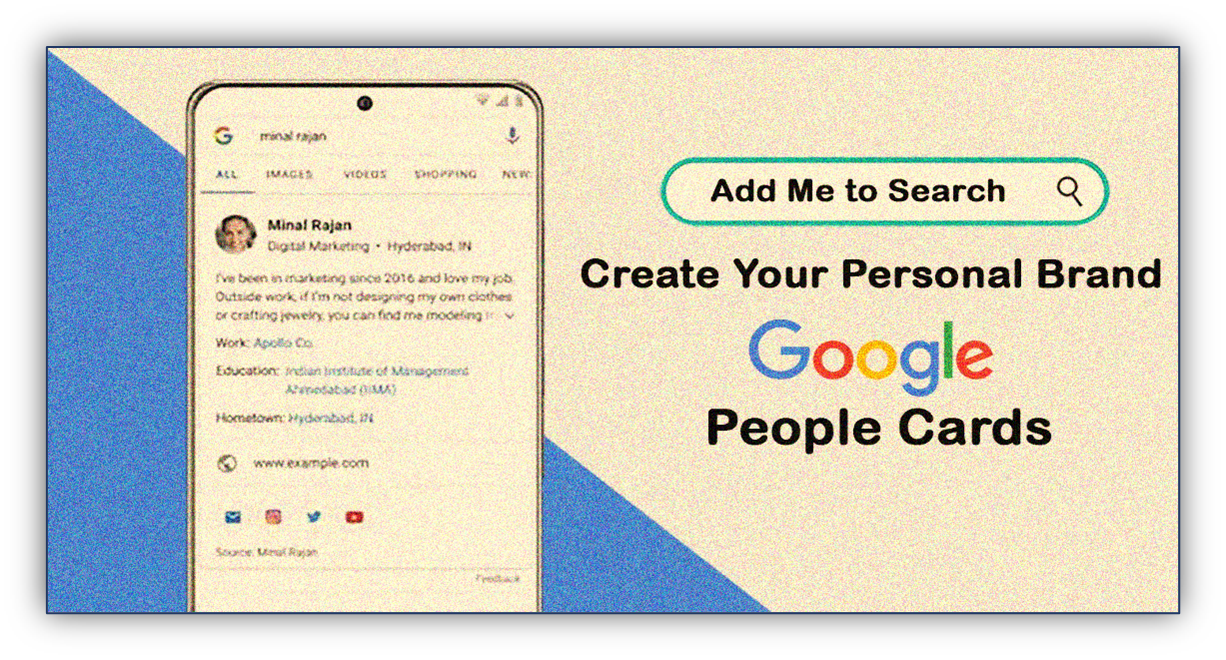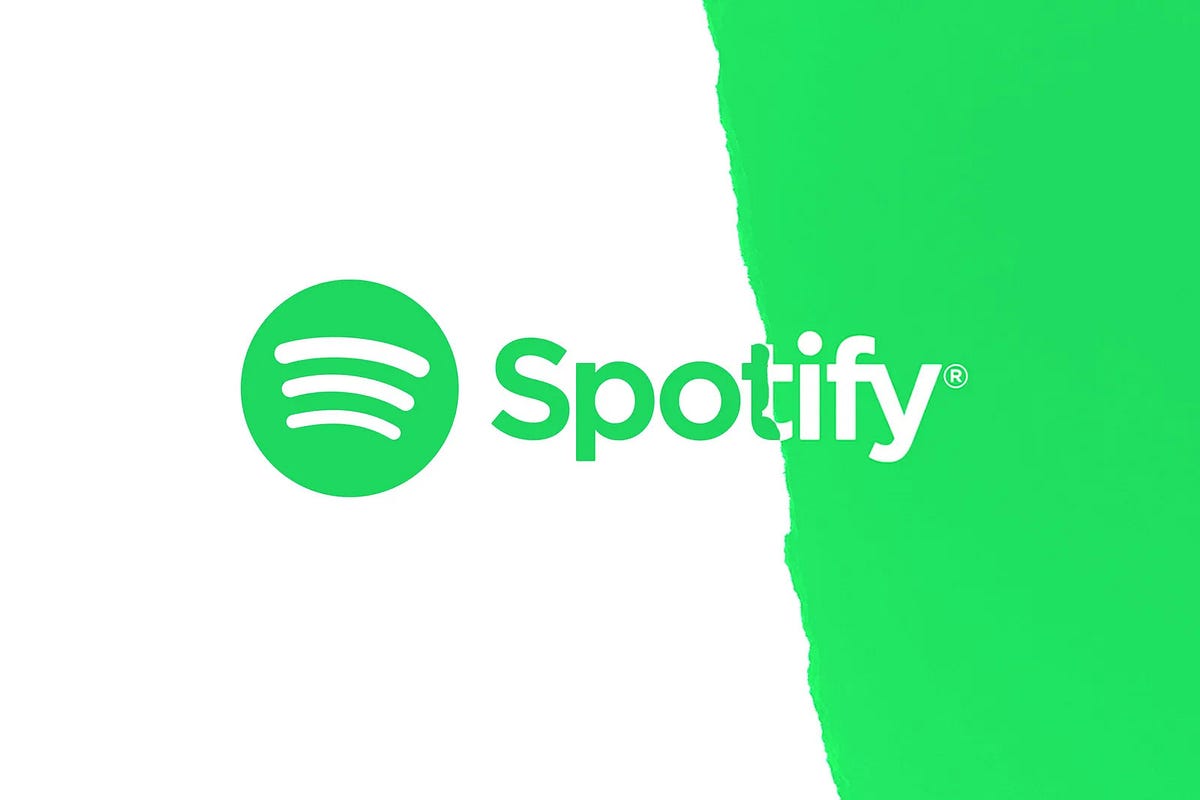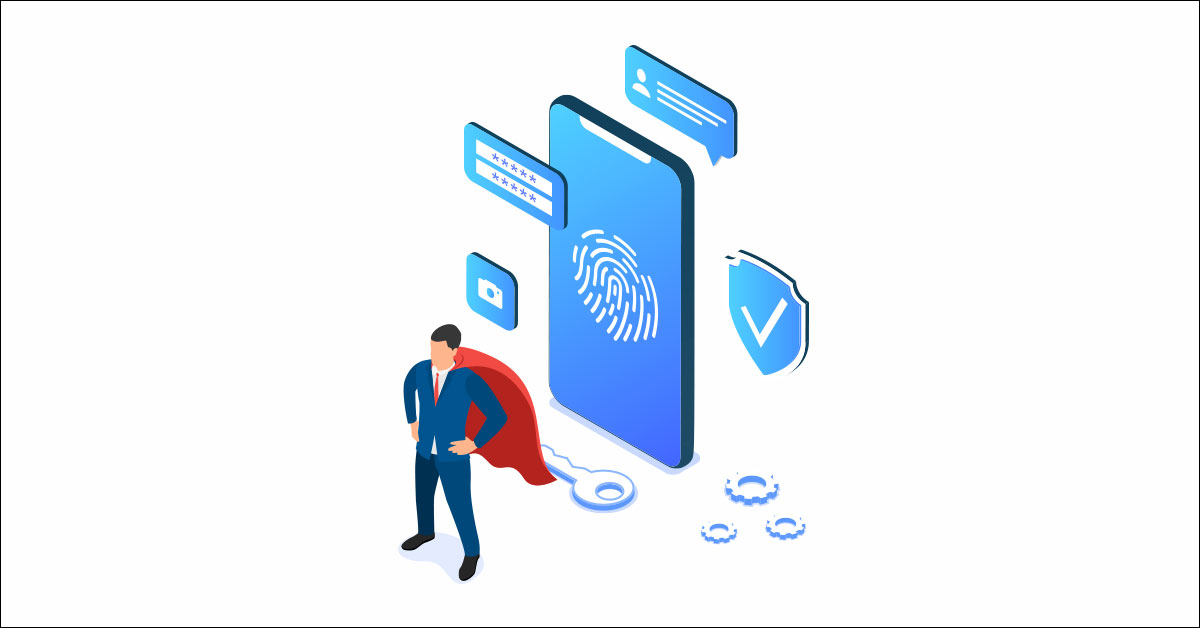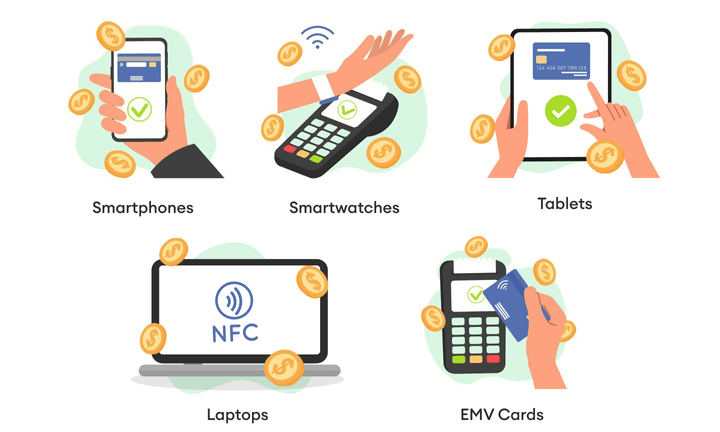- April 8, 2023

The manufacturing industry has undergone significant changes in recent years, with the advent of new technologies such as the Internet of Things (IoT). By integrating IoT-enabled solutions into manufacturing operations, companies can achieve greater efficiency, productivity, and safety. However, implementing IoT solutions can be challenging, requiring specialized skills, expertise, and investment.
In this article, we’ll explore in depth the applications, use cases, real-world examples and challenges of IoT technology in manufacturing. Continue reading to find out how your business can also reach the heights of glory by implementing IoT through professional IoT development services.
IoT is Taking Over the Manufacturing Industry – Overview
It is true that the Internet of Things (IoT) is having a significant impact on the manufacturing industry, as IoT is transforming the way products are made and delivered. IoT refers to the interconnectedness of devices and systems through the internet, enabling them to communicate with each other and share data in real time.
IoT is used in the manufacturing industry to improve efficiency, reduce costs, and enhance product quality. Smart sensors and devices are being used to monitor and optimize production processes, while predictive analytics is being used to anticipate and prevent equipment failures before they occur. This leads to increased uptime, reduced maintenance costs, and better product quality.
IoT in manufacturing is also being used to create smarter and more connected supply chains, allowing manufacturers to track raw materials and finished products in real time. This improves inventory management, reduces waste, Material Handling Solutions and enables faster delivery times.
Benefits of IoT in the Manufacturing Industry
Still, second-guessing about IoT-enabled manufacturing? Here are 5 reasons why IoT is the future of manufacturing and the benefits of implementing IoT technology in the manufacturing industry:
IoT can Reduce Costs
IoT technology allows manufacturers to automate processes and optimize their use of resources, leading to reduced costs associated with labor, maintenance, and production. This leads to improved efficiency and cost-effectiveness, making it a key driver for the adoption of IoT in the manufacturing industry.
IoT can Release Products Faster
By leveraging IoT technology, manufacturers can accelerate their product development cycles and bring products to market faster. IoT-enabled sensors and analytics can provide real-time insights into product performance and quality, allowing manufacturers to make informed decisions and rapidly iterate on their designs.
IoT can Make Better Decisions
IoT technology provides manufacturers with unprecedented visibility into their operations, allowing them to make data-driven decisions and optimize their processes. With real-time data analytics, manufacturers can identify trends, detect anomalies, and make informed decisions to improve their overall efficiency and productivity.
IoT can Do Large-Scale Customization
IoT technology enables manufacturers to produce customized products at scale, allowing them to meet the diverse needs of their customers. By leveraging IoT-enabled sensors and analytics, manufacturers can collect data on customer preferences and use this information to produce products tailored to specific customer needs.
Also Read: AI In Agriculture Market
IoT Offers Better Safety
IoT technology can be used to enhance safety in the manufacturing industry by monitoring manufacturing equipment and facilities in real-time. IoT-enabled sensors can detect potential safety hazards and alert workers to potential dangers, helping to prevent accidents and protect workers and equipment.
Also Read: How Artificial Intelligence Is Making An Impact On Sports Industry In 2024 (With Examples)
How IoT is Revolutionizing the Manufacturing Industry (Real-World Applications)
The adoption of IoT in the manufacturing industry is leading to significant improvements in productivity, quality, and cost-effectiveness. As a result, we can expect to see more and more manufacturers embracing IoT technologies in the years to come.
1- Anomalies Can be Predicted Early
By using IoT sensors and data analytics, manufacturers can monitor their production processes in real-time and identify any anomalies or issues before they occur. This allows them to take proactive measures to prevent disruptions to their operations, reducing downtime and minimizing the risk of product defects.
2- Customer Satisfaction Levels are Elevated
By improving the overall quality of their products and ensuring timely delivery, manufacturers can enhance customer satisfaction levels. IoT technology allows manufacturers to track their products at every stage of the supply chain, ensuring that they reach their customers on time and in the best possible condition.
3- Asset Management is Enhanced
IoT sensors can be used to monitor the condition of manufacturing equipment, predicting when maintenance is required to prevent breakdowns and optimize the use of resources. This helps manufacturers reduce maintenance costs, extend the lifespan of their equipment, and improve their overall asset management.
4- Supply Chain is Managed Efficiently
By tracking raw materials and finished products in real-time, manufacturers can optimize their supply chain operations, reducing waste, and improving efficiency. This allows them to better manage their inventory, meet customer demand more effectively, and reduce overall costs.
5- Operational Intelligence is Implemented
By analyzing data from across their operations, manufacturers can gain insights into their processes, identifying areas for improvement and optimizing their operations. This leads to better decision-making and improved performance across the entire manufacturing process.
6- Overall Quality is Increased
By using IoT sensors and data analytics, manufacturers can improve the overall quality of their products, reducing defects, and ensuring that they meet customer requirements. This not only enhances customer satisfaction but also reduces costs associated with rework and product recalls.
7- Production Planning is Improved
By analyzing production data in real time, manufacturers can optimize their production schedules and ensure that they are producing the right products at the right time. This leads to more efficient use of resources, reduced downtime, and improved overall productivity.
8- Plant Safety and Security is Ensured
IoT technology can be used to monitor manufacturing facilities, ensuring that they are safe and secure for workers and equipment. By detecting potential safety hazards and security breaches in real time, manufacturers can take immediate action to prevent accidents and protect their assets.
Also Read: Top 15 Optimal Databases For Web Applications To Use In 2024
IoT Use Cases & Real-World Examples in Manufacturing
IoT technology has already set foot in the manufacturing industry, and it is the reason for the success of numerous businesses. Here are some examples of how IoT is being used in the manufacturing industry:
Remote Monitoring
IoT sensors can be used to remotely monitor manufacturing equipment, providing real-time data on equipment performance and identifying potential issues before they occur. For example, a manufacturer may use IoT sensors to monitor the temperature and humidity levels of their manufacturing facilities, ensuring that the conditions are optimal for production.
For Example: the leading portable toilet maker Armal uses moulding machinery to create plastic frames and other product components. They sought to monitor and optimize their machinery’s power consumption. By implementing IoT sensors and industrial software, Armal was able to remotely track the power consumption of their production cycle in real-time. The IoT monitoring system enabled them to cut machinery energy costs by nearly 40%, achieving their digitalization goal of obtaining an IoT solution that could monitor real-time power for each machine.
Digital Twinning
IoT technology can be used to create digital twins of manufacturing equipment, allowing manufacturers to simulate their equipment and optimize their performance. For example, a manufacturer may use IoT-enabled sensors to create a digital twin of a production line, allowing them to simulate different scenarios and identify areas for improvement.
For Example: Kaeser, a prominent manufacturing company and provider of compressed air products adopted digital twin technology to transform its business model from selling products to offering services. By utilizing the digital twin system, Kaeser was able to collect operational data on its equipment throughout its entire lifecycle, particularly air consumption rates. This real-time monitoring enabled Kaeser to implement a new pricing model that charges clients based on their actual air consumption, rather than a fixed rate. This approach led to a 30% reduction in commodity costs for Kaeser and helped the company to onboard almost half of all major vendors using digital twin technology.
Management of Logistics
IoT technology can be used to track and manage the logistics of manufacturing operations, from raw materials to finished products. IoT applications for logistics include IoT-enabled sensors to track the location and condition of their products in real-time, ensuring that they are delivered on time and in optimal condition.
For Example: Amazon has leveraged standalone drop shipping bots and lockers to improve delivery convenience and increase profits. This has also led to reduced shipping costs for manufacturers. IoT technology can help companies streamline their order processing and improve their overall operational efficiency. By automating order processing and providing real-time status updates, manufacturers can reduce their reliance on delivery staff and cut operating costs. In addition, connected bots can be used for last-mile delivery, further reducing costs and improving customer satisfaction. Logistics managers can also use IoT technology to optimize their operations, including monitoring fuel costs, smart deliveries, diagnostics, and driver performance. By providing real-time insights into driver and vehicle performance, manufacturers can improve safety, reduce inventory damage, and lower insurance payments.
Manufacturing of KPIs
IoT technology can be used to measure key performance indicators (KPIs) in the manufacturing industry, providing real-time data on production rates, downtime, and product quality. For example, a manufacturer may use IoT-enabled sensors to measure the energy consumption of their production lines, identifying areas for energy savings and reducing their carbon footprint.
For Example: Manufacturing companies have a wide variety of KPIs to choose from, and one of the most commonly used KPIs is overall equipment efficiency (OEE). This KPI is calculated by measuring a factory’s performance, availability, and quality. While OEE is a useful metric, it should be used in conjunction with other KPIs to gain a more comprehensive understanding of performance. By utilizing a KPI dashboard, manufacturing businesses can stay focused on their priorities and ensure that they are making progress in the right direction. The dashboard provides real-time data on key performance indicators, allowing decision-makers to make informed decisions and optimize their operations.
Latest IoT Trends in Manufacturing in 2024
Here are some of the latest IoT development trends in manufacturing that demonstrate the growing importance of IoT in the manufacturing industry and the potential benefits it can bring to businesses:
Financial Safety of Employees
IoT is being used to improve employee safety in manufacturing facilities. According to a report by MarketsandMarkets, the global IoT in the manufacturing market is expected to grow from $12.67 billion in 2016 to $45.30 billion by 2022, with a compound annual growth rate (CAGR) of 24.8%.
Physical Safety of Employees
IoT technology is being used to monitor and improve workplace safety, reducing the risk of accidents and injuries. According to a report by MarketsandMarkets, the global IoT in the manufacturing market for safety and security applications is expected to grow from $1.69 billion in 2016 to $6.47 billion by 2022, with a CAGR of 24.8%.
Privacy & Security Improvement
As more manufacturing operations become connected, privacy and security are becoming increasingly important. A survey by Deloitte found that 39% of manufacturers have already implemented IoT security solutions, and another 34% plan to do so in the next two years.
Machine-to-Machine (M2M) Automation
M2M communication is becoming more prevalent in manufacturing, allowing machines to communicate with each other and optimize their performance. According to a report by Grand View Research, the global M2M market is expected to grow from $22.67 billion in 2015 to $85.96 billion by 2024, with a CAGR of 21.0%.
VR and AR Integration to Inter-Mingle Digital and Physical Worlds
Virtual and augmented reality (VR and AR) technologies are being integrated into manufacturing operations to improve efficiency and accuracy. According to a report by ABI Research, the global market for enterprise AR hardware and software is expected to grow from $822 million in 2018 to $21 billion by 2024, with a CAGR of 68.9%.
Also Read: Gaining Investment For Your App In 2024 – Secure Your App’s Success With Our Investment Tips
Why It is Necessary to Consult with IoT Industry Experts?
Integrating IoT technology into manufacturing operations can bring many benefits, but it also poses several challenges. Consulting with IoT industry experts can help companies overcome these challenges and ensure that their IoT systems are secure, efficient, and effective. Experts can provide guidance on data security, investment and ROI, employee training, and IT/OT integration, helping companies to achieve their IoT goals and realize the benefits of this technology.
Here are some of the main challenges of integrating IoT in manufacturing & why it is better to contact experts:
Data Security Issues
One of the biggest challenges of IoT in manufacturing is data security. IoT devices are often connected to networks and can potentially expose sensitive data to cyber threats. Companies must take steps to ensure the security of their IoT systems, including implementing firewalls, encryption, and access controls.
Investment and ROI Requirements
Implementing IoT technology in manufacturing requires a significant investment in hardware, software, and infrastructure. Companies must carefully consider the cost of implementing IoT solutions and weigh them against the potential return on investment (ROI).
Employee Expertise & Skills
Integrating IoT technology in manufacturing requires specialized skills and expertise. Employees must be trained to use and maintain IoT systems, which can be challenging for companies without a background in technology.
Mixing IT and OT
IoT in manufacturing requires the integration of information technology (IT) and operational technology (OT). These two areas have traditionally been separated and require different skills and expertise. Integrating IoT systems into manufacturing operations requires companies to bridge this gap and ensure that their IT and OT systems work together seamlessly.
Conclusion: Choose Hoff & Mazor to Create IoT-enabled Solutions for Your Manufacturing Business
Integrating IoT technology into your manufacturing operations can bring significant benefits, including increased efficiency, better decision-making, and improved safety. However, it also poses significant challenges, including data security issues, investment requirements, employee training, and IT/OT integration.
To ensure that your IoT solutions are secure, efficient, and effective, it’s essential to work with experienced IoT industry experts. Hoff & Mazor is a leading provider of IoT-enabled solutions for the manufacturing industry. Their team of experts has extensive experience in developing and implementing IoT solutions for a wide range of manufacturing applications.
By partnering with Hoff & Mazor, you can be sure that your IoT solutions will be tailored to your specific needs and requirements. They will work with you every step of the way to ensure that your IoT solutions are seamlessly integrated into your manufacturing operations, improving efficiency, productivity, and safety.
So, if you’re looking to take advantage of the benefits of IoT technology in manufacturing, contact Hoff & Mazor today to discuss your needs and learn more about how they can help you achieve your IoT goals.
- April 7, 2023
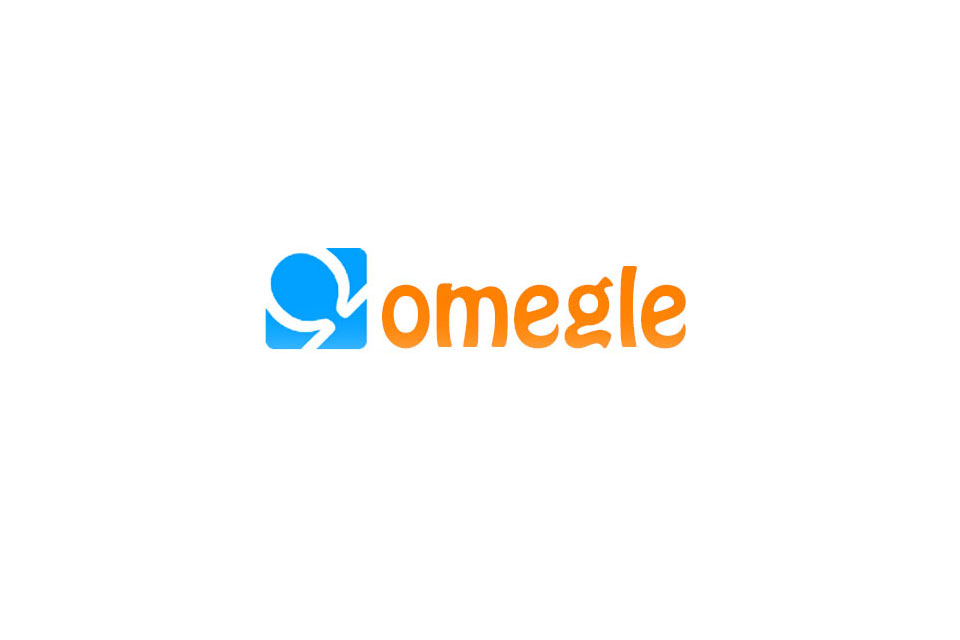
Making new friends online is one of the coolest things about living in the digital age, right? That’s why the Omegle app is all the rage now. It’s an app that lets you connect with random peeps without sharing your details or even registering.
But let’s be real, talking to strangers can be a little sketchy sometimes. Luckily, there are loads of other apps out there that can help you find like-minded people to chat with. And if you’re thinking about developing an app for your biz, Hoff & Mazor got you covered. It’s an app development company with expertise in Android as well as iOS app development and turning your app ideas into successful ventures.
So, let’s dive into this blog and check out some of the best Omegle alternatives you gotta try!
What is Omegle?
Users can interact with random strangers on the free online chat platform Omegle to have private talks. The website was launched in March 2009 and has gained significant popularity over the years, especially among younger users.
Omegle: Main Features, Privacy Concerns, Rating & Pricing
Main Features of Omegle
- Anonymous chat: Omegle allows users to chat with strangers without revealing their identity. Users of the website are not required to register or give any personal information.
- Text and video chat: Omegle offers both text and video chat options. Users can choose to communicate through either mode or switch between them during the conversation.
- Random matching: Omegle pairs users with strangers at random, based on their interests and preferences.
- Moderation: The website has moderators who monitor the chats and ban users who violate the terms of service or engage in inappropriate behavior.
Privacy Concerns of Omegle
Omegle has received mixed reviews from users and critics. While some users enjoy the random and anonymous nature of the site, others have criticized it for facilitating inappropriate behavior and harassment. The website’s moderation policies have also been questioned, with some users reporting that they have encountered inappropriate content despite the presence of moderators.
Rating of Omegle
- Rated 2.6/5 on Trustpilot.
- Rated 3/5 on Common Sense Media.
- Rated 1.7/5 on Sitejabber.
Pricing of Omegle
Omegle is a completely free website, and users do not need to pay anything to use its services.
10+ Omegle Alternative Apps You Must Try: Special Features, Rating, Pricing & Device Exclusivity Options
We’ve compiled a list of 13 best alternative apps like Omegle or may be better in certain aspects. Continue reading to find out more about these Omegle alternatives:
1- Yalla: Best Omegle Alternative App for Newbies
Special Features: Yalla is an app that allows you to connect with random strangers via text, audio, and video chats, similar to Omegle. It offers a variety of group chat rooms for users to mingle in and a visually appealing user interface that is easy to navigate. Yalla also features a filter option to help you meet people who share your interests, play games, and send virtual gifts. Additionally, Yalla offers private conversations for users who prefer a one-on-one chat experience.
- Rating: 4
- Pricing: Free and in-app purchases
- Device Exclusivity: iOS & Android
2- Azar: Top Omegle Alternative App for Video Chatting
Special Features: Azar is a chat app similar to Omegle, but with a focus on user experience and performance. The app allows users who are 18 or older to connect with other users for text, audio, or video chats. It features a search filter option, auto-translation, the ability to add people to your friend list, and stunning filters and backgrounds.
- Rating: 4.4
- Pricing: Free and in-app purchases
- Device Exclusivity: iOS & Android
3- Chatous: Another Omegle Alternative App or Chatting with Random People
Special Features: Chatous is a popular random chat app, especially among young users. It offers similar features to Omegle and Azar, such as video and text chatting with strangers. The app also allows you to use search filters and hashtags to find the right person. Additionally, users can share expiring photos, videos, and audio during chatting sessions.
Rating: 3.8
Pricing: Free and in-app purchases
Device Exclusivity: iOS & Android
4- HOLLA: A Better Omegle Alternative App with More Features
Special Features: HOLLA is an app similar to Omegle, offering text, audio, and video chats to connect with new people. It stands out for its voice mode feature, enabling conversations with people who speak the same language. The app includes filters, background themes, and user verification for safety. Additionally, it helps to find people who share similar interests for a fun time hanging out. HOLLA offers online video calls and connects users with the right person, all for free.
Rating: 4.3
Pricing: Free and in-app purchases
Device Exclusivity: Android
5- Topface: A High-Performing Omegle Alternative App
Special Features: Topface is a dating app and site similar to Omegle, popular in Russia. It has over 100 million users worldwide, with most using it for dating and flirting. It offers text, voice, and video chat options, and users can remain anonymous if they choose. Overall, Topface is considered a safe platform for dating.
Rating: 4.5
Pricing: Free and in-app purchases
Device Exclusivity: iOS & Android
6- Rooit: A More Secure Omegle Alternative App
Special Features: Rooit is a top Omegle alternative app that enables you to chat anonymously with people in various chat rooms. It also offers exciting features like themes, role-playing games, and a search filter for better matches. The app ensures privacy protection while providing fun games to play. Additionally, Rooit has attractive themes to enhance the user’s visual experience.
Rating: 2.5
Pricing: Free and in-app purchases
Device Exclusivity: iOS & Android
7- AHA: Another Good Omegle Alternative App for Meeting New People
Special Features: AHA is a video chat platform like Omegle that lets you meet new people from all over the world. It provides a secure way to make video calls and have fun with strangers. You need a social media to account to sign up, and the app offers various background themes, stickers, and effects. AHA also has filters, supports multiple languages, and offers an exclusive video chat experience.
Rating: 4.3
Pricing: Free and in-app purchases
Device Exclusivity: iOS & Android
8- Fav Talk: An Omegle Alternative App for Interacting with Strangers
Special Features: Fav Talk is a text chat app that connects you with people worldwide based on shared interests. Creating an account and adding interests is all that’s needed to start chatting. It’s secure as all user accounts are verified, and you’ll only interact with like-minded individuals. The app boasts an easy-to-use interface and privacy controls.
Rating: 3.5
Pricing: Free and in-app purchases
Device Exclusivity: iOS & Android
9- Pikii: Popular Omegle Alternative App for Connecting with Famous People
Special Features: Pikii is an innovative iPhone app, similar to Omegle, that connects people with similar interests. The app is robust, feature-packed, and performance-oriented, as it had to pass strict requirements to be approved on the Apple Store. You may connect with friends, fans, and celebrities on Pikii from all around the world, as well as meet new people and gain more followers. The app also features live streaming, a user-friendly interface, and the ability to follow your favorite celebrities.
Rating: Unavailable
Pricing: Free
Device Exclusivity: iOS
10- Meow Chat: High-Speed Omegle Alternative App
Special Features: MeowChat is an app similar to Omegle that offers fun and engaging features. It allows users to interact with new people through text and video chat. Since most users are single and looking to connect with new people, it’s an ideal app for those seeking a good time. MeowChat’s unique selling point is that it also allows users to play games within the app. Other features include live-streaming, video calls, and the ability to interact with people from around the world.
Rating: 4
Pricing: Free and in-app purchases
Device Exclusivity: Android
11- Frill Live: Another Good Omegle Alternative App for Meeting with Strangers
Special Features: Frill Live is a new app similar to Omegle, where you can interact with new people, chat with friends, watch videos and go live streaming. It allows you to create chat rooms, makes video calls, and comes with additional features such as face filters, background themes, and aesthetically appealing effects. Frill Live also offers virtual gifts and the ability to create live chat rooms.
Rating: 3.7
Pricing: Free and in-app purchases
Device Exclusivity: iOS & Android
12- LiveMe: An Omegle Alternative App with Live Streaming to Make Money
Special Features: LiveMe is a popular app similar to Omegle, offering many features such as text, audio, and video calls with strangers or friends, along with live-streaming to help users earn money. The app is highly desired among those looking to make money online and provides security for all its users. To sign up, users need to have a social media account. Other notable features of the app include discovering new people, attractive filters, and effects.
Rating: 4.3
Pricing: Free and in-app purchases
Device Exclusivity: iOS & Android
13- Mico: User-Friendly Omegle Alternative App
Special Features: Mico is an app similar to Omegle, packed with features for making new friends online. Many apps try to replicate Omegle’s success, but their success depends on functionality, performance, and features. Mico offers an interactive user interface, group chat, virtual gifts, live streaming, and real-time auto-translation for chatting with people globally. Main features include discovering new people, live streaming, auto-translation, and live video chat.
Rating: 4.5
Pricing: Free and in-app purchases
Device Exclusivity: iOS & Android
Summary: 10+ Omegle Alternatives of 2023 That Might Be Better
Here’s a quick overview of all the Omegle alternative apps discussed in this article:
| Alternative Omegle App | Known For | Rating | Device Exclusivity | Pricing |
| Yalla | Best Omegle Alternative App for Newbies | 4 | iOS & Android | Free with In-app purchases |
| Azar | Top Omegle Alternative App for Video Chatting | 4.4 | iOS & Android | Free with In-app purchases |
| Chatous | Another Omegle Alternative App or Chatting with Random People | 3.8 | iOS & Android | Free with In-app purchases |
| HOLLA | A Better Omegle Alternative App with More Features | 4.3 | Android | Free with In-app purchases |
| Topface | A High-Performing Omegle Alternative App | 4.5 | iOS & Android | Free with In-app purchases |
| Rooit | A More Secure Omegle Alternative App | 2.5 | iOS & Android | Free with In-app purchases |
| AHA | Another Good Omegle Alternative App for Meeting New People | 4.3 | iOS & Android | Free with In-app purchases |
| Fav Talk | An Omegle Alternative App for Interacting with Strangers | 3.5 | iOS & Android | Free with In-app purchases |
| Pikii | Popular Omegle Alternative App for Connecting with Famous People | – | iOS | Free |
| MeowChat | High-Speed Omegle Alternative App | 4 | Android | Free with In-app purchases |
| Frill Live | Another Good Omegle Alternative App for Meeting with Strangers | 3.7 | iOS & Android | Free with In-app purchases |
| LiveMe | An Omegle Alternative App with Live Streaming to Make Money | 4.3 | iOS & Android | Free with In-app purchases |
| Mico | User-Friendly Omegle Alternative App | 4.5 | iOS & Android | Free with In-app purchases |
- April 5, 2023
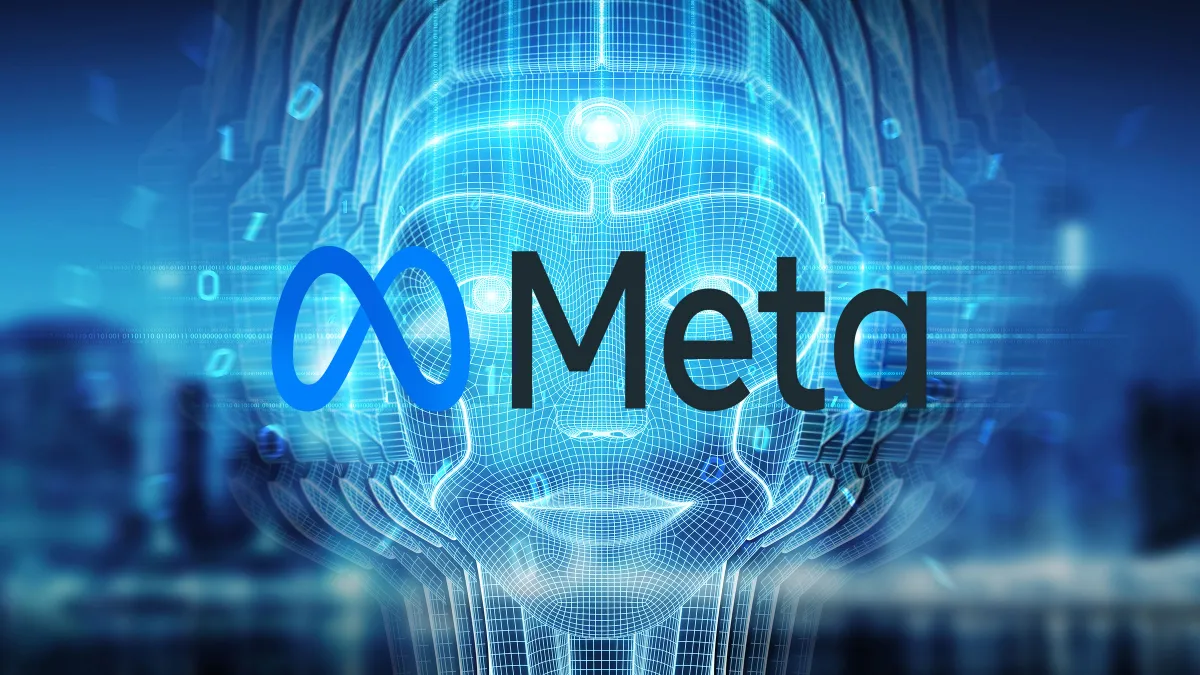
On Wednesday, META released an artificial intelligence model capable of identifying specific objects within an image. Additionally, Meta published a dataset of image annotations, which it claims is the largest of its kind.
According to a blog post by the company’s research division, their Segment Anything Model (SAM) is capable of identifying objects in images and videos, even in instances where it has not been trained on those specific items.
SAM allows for object selection through either clicking or text prompts. During a demonstration, the tool successfully identified multiple cats in a photo when prompted by the written word “cat.”
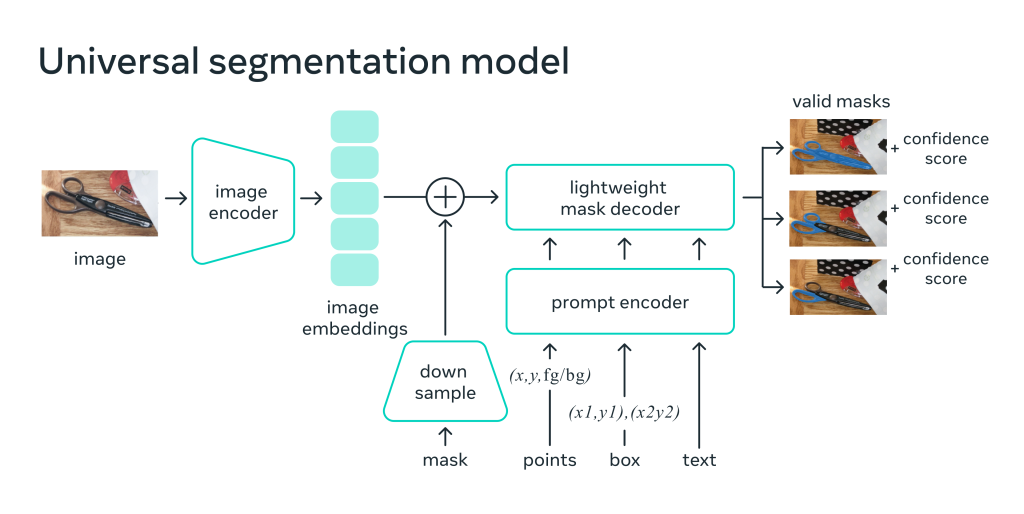
Large technology companies have been promoting their advancements in artificial intelligence since the emergence of Microsoft-supported OpenAI’s ChatGP chatbot, which became popular in the autumn and prompted a surge of investments and competition to dominate the field. Meta has hinted at various features that use the generative AI technique popularized by ChatGP, which generates entirely new content instead of merely identifying or classifying data like other AI, but has not yet launched a product.
Two examples of these tools are one that creates surreal videos based on text prompts and another that generates illustrations for children’s books using written descriptions.
- April 5, 2023
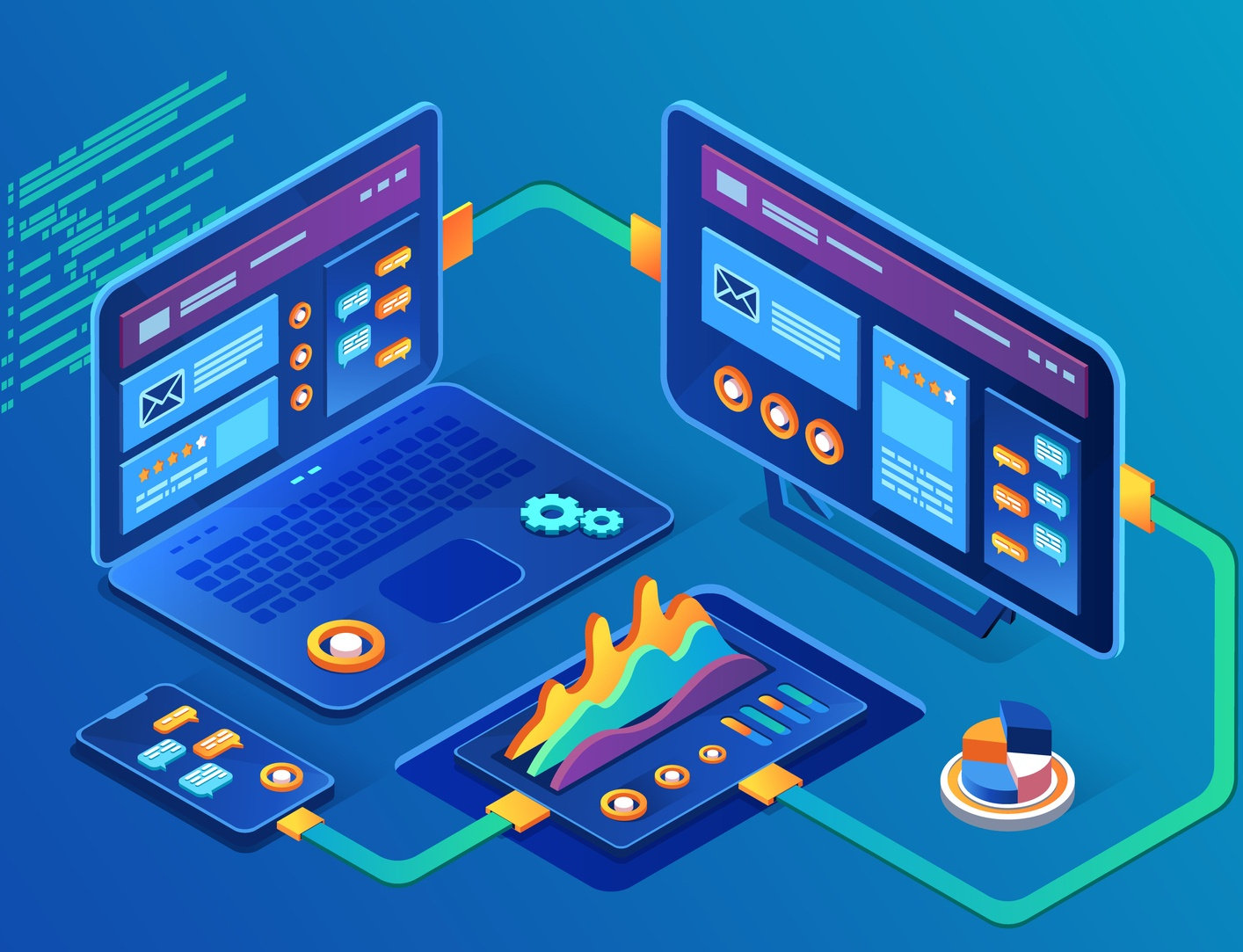
Are you a gamer with a great idea for a mobile game App? If so, you could be sitting on a gold mine. The mobile gaming industry is worth billions of dollars and shows no signs of slowing down. Because with the rise of smartphones, mobile gaming has become one of the fastest-growing industries in the world. Whether you’re a commoner or a businessman looking to invest in profitable ventures, there’s no better time to jump into the world of mobile gaming. Thanks to game development companies & NFT development companies, creating a highly profitable mobile game has become easier than ever.
In this guide, we’ll show you how to get started with creating a mobile game and how to earn lots of money from it; and how to create a successful mobile game that will stand out from the crowd. From choosing the right platform to marketing your game, we’ll give you the tools you need to succeed in this exciting and lucrative industry. So, let’s get started!
How Much Money Does a Mobile Game Usually Make?
The amount of money a mobile game can make depends on various factors such as the game’s popularity, the monetization strategy, and the target audience. Some popular mobile games have made millions of dollars, while others have failed to generate significant revenue. So, while not every mobile game will achieve an insane level of success, the potential for earning a substantial amount of money is definitely there for those who create engaging and addictive games.
Examples of Popular Mobile Games That are Making Tons of Money
Here are some examples of mobile games that are making tons of money:
Angry Birds
This classic mobile game has been downloaded more than 4.5 billion times and has generated over $3 billion in revenue. The game’s success can be attributed to its addictive gameplay, colorful graphics, and clever marketing.
Gardenscapes
This puzzle game has been downloaded over 1 billion times and has generated over $1 billion in revenue. The game’s popularity can be attributed to its engaging storyline, unique gameplay mechanics, and regular updates.
Granblue Fantasy
This Japanese role-playing game has been downloaded over 24 million times and has generated over $2 billion in revenue. The game’s success can be attributed to its stunning graphics, engaging storyline, and strong community support.
Candy Crush Saga
Candy Crush Saga is a match-three puzzle game that has been downloaded over 2.7 billion times and has generated over $4.9 billion in revenue since its release in 2012. The game’s success can be attributed to its addictive gameplay, colorful graphics, and social features that allow players to compete with friends and share progress on social media.
Pokémon Go
Pokémon Go is a location-based augmented reality game that was released in 2016 and has been downloaded over 1 billion times. The game has generated over $4.2 billion in revenue and has become a cultural phenomenon. The game’s success can be attributed to its use of real-world locations, nostalgia for the Pokémon franchise, and its ability to bring people together.
Clash of Clans
Clash of Clans is a strategy game that has been downloaded over 500 million times and has generated over $7 billion in revenue since its release in 2012. The game’s success can be attributed to its engaging gameplay, social features that allow players to join clans and compete with others, and regular updates that add new content and features.
These games have all been incredibly successful due to their engaging gameplay, social features, and addictive nature. They have all also been able to monetize their player base through in-app purchases, which allow players to buy virtual currency, power-ups, and other items that enhance their gameplay experience. By creating highly quality addictive games, these companies have been able to generate significant revenue and build loyal fan bases that continue to play their games years after their release.
How To Make Money Off Mobile Games?
If you’re a mobile game developer, there are several ways to make money off your game. It’s essential to choose the monetization strategy that best suits your game and target audience. By combining these strategies and experimenting with different approaches, you can maximize your game’s revenue potential and build a successful mobile gaming business.
Also Read: What Impact Could Metaverse Have On The Virtual Gaming Industry & How Exactly?
5 Ways to Get Paid Through Your Mobile Game
Here are five common ways to monetize mobile games:
Paid App
One way to monetize your mobile game is to charge users upfront to download the game. While this approach may limit your game’s reach, it can be an effective way to generate revenue if your game is high-quality and has a dedicated fan base.
Advertisements
Another way to make money off your mobile game is to display advertisements to users. This can include banner ads, interstitial ads, or video ads that play between levels or game sessions. Advertisements can provide a steady stream of revenue, but it’s essential to balance the number of ads with the user experience to avoid frustrating users.
Partnerships
You can also monetize your mobile game through partnerships with other companies. This can include sponsorships, product placement, or collaborations with other game developers or brands. Partnerships can provide additional revenue streams and can help to increase your game’s exposure.
In-App Purchases
In-app purchases allow users to buy virtual goods, such as power-ups, extra lives, or in-game currency, to enhance their gaming experience. This approach is particularly effective for free-to-play games and can generate significant revenue if implemented correctly.
Subscriptions
You can also monetize your mobile game through subscriptions. This approach allows users to access premium features or content for a monthly or yearly fee. Subscriptions can provide a reliable source of revenue but require a significant investment in developing and maintaining new content.
10 Key Strategies to Create a Highly Profitable Mobile Gaming App
Looking to create the next big mobile gaming app? Here are 10 proven strategies to help you achieve success and generate revenue.
Tell Your Story
A compelling story or theme can help your mobile gaming app stand out from the competition. Creating a unique world or characters that users can connect with can make your game more memorable and increase user engagement. By developing a strong narrative or theme, you can create a game that users will want to play again and again.
KISS – The Law of Simplicity
Keep It Simple, Stupid – this principle is crucial when it comes to mobile game development. Simple, easy-to-understand mechanics and controls can make your game more accessible to a wider audience. A game that’s too complicated or difficult to play can turn users off and hurt your chances of success. Focus on creating a game that’s easy to pick up and play, but still challenging and engaging.
App’s Success Revolves Around User Experience
The success of your mobile gaming app depends on how users interact with it. The user experience should be intuitive, easy to navigate, and enjoyable. Regular updates and improvements can help to keep users engaged and interested in your game. Additionally, incorporating social features that allow users to connect with other players or share their progress on social media can help to build a community around your game and increase its popularity.
Identify your Target Audience
Understanding your target audience is crucial when creating a mobile gaming app. You need to know who your users are, what they like, and what they expect from a gaming app. This knowledge will help you create a game that resonates with your target audience and increase the chances of them paying for in-app purchases or becoming loyal players.
Aim for the Moon
Aim high and set ambitious goals for your mobile gaming app. This can help to motivate you and your team to create a game that stands out from the competition and achieves significant success. Consider what sets your game apart and focus on creating something that’s truly unique and innovative.
Spend Money on User Acquisition
Getting your game in front of users is essential for success. While organic growth can happen, it’s often not enough to achieve the scale and revenue potential needed for a highly profitable mobile gaming app. Consider investing in user acquisition strategies such as social media advertising or influencer partnerships to reach a wider audience and attract more users to your game.
Create a Monetization Plan
Developing a monetization plan is crucial for generating revenue from your mobile gaming app. This should include a strategy for in-app purchases, advertisements, subscriptions, or other revenue streams. It’s also essential to balance revenue generation with the user experience to avoid frustrating or alienating users.
Leverage Social Media Platforms
Social media can be a powerful tool for promoting your mobile gaming app and building a community around it. By creating a social media presence for your game, you can engage with users, share updates and news, and attract new players to your game. Consider leveraging social media influencers and paid advertising to reach a wider audience and increase your game’s visibility. Partnering with an experienced influencer marketing agency can help you identify the right influencers and execute effective campaigns.
Incorporate Social Features
Social features are an excellent way to increase user engagement and retention. You can add social features such as leaderboards, social sharing, or multiplayer modes to make your game more interactive and encourage users to invite their friends to play. Social features can help create a community around your game and lead to increased revenue through in-app purchases or subscriptions.
Hire Professional Game Developers
Creating a high-quality mobile gaming app requires a team of skilled professionals with expertise in game design, programming, art, and sound. Hiring professional mobile game development services can help you create a game that’s polished, engaging, and free from bugs or technical issues. Working with experienced game developers can also help you to stay up-to-date with the latest trends and best practices in the industry, increasing your chances of success.
Continuously Update and Improve the Game
Mobile gaming is a highly competitive industry, and user expectations are continually evolving. To stay relevant and profitable, it’s essential to regularly update and improve your game. This can include adding new levels, features, or game modes or improving graphics and performance. Continuously updating and improving your game can keep users engaged and increase revenue through in-app purchases and subscriptions.
Conclusion: Creating a Highly Profitable Mobile Game
Creating a highly profitable mobile game requires careful planning, dedication, and a focus on user experience. By incorporating key strategies such as setting ambitious goals, keeping the game simple, and investing in user acquisition and social media promotion, you can increase your chances of success in the competitive world of mobile gaming. It’s also important to develop a monetization plan that balances revenue generation with the user experience to keep users engaged and loyal. With the right team, resources, and execution, you can create a mobile game that stands out from the crowd and generates significant revenue over time.
- April 3, 2023

Trying to estimate your MVP’s development costs and timeframe? Although it’s difficult to give an estimated number as it is variable based on the specifics of the MVP you want to develop, you can definitely catch an idea of how much it will cost you to build an MVP App. We believe that every startup should have access to reliable information about MVP development costs. Our goal is to empower entrepreneurs to make informed decisions about their tech projects.
Read this article to find out all sorts of expenses you must look out for to set a budget for your MVP’s development and post-development expenses in 2023.
How Much does it Cost to Build an MVP in 2023?
The cost of MVP app development in 2023 depends on several factors, such as the complexity of the product, the development team’s location and experience, and the development methodology used. Based on industry averages, the estimated MVP development cost can range from $10,000 to $100,000 or more.
Here are some factors that can influence the MVP software development cost:
- Type of Application Being Built
- The User Interface & Experience (UI/UX Design) of MVP
- Hiring an MVP Development Team
- Hiring MVP Developers by Hourly Rate
- Front-End Interface Development for MVP
- Back-End Interface Development for MVP
- Multi/Cross-Platform Compatibility of MVP
- Signing the Contract for MVP Development on Specific Terms
- MVP Marketing Costs
- MVP Sales & Service Costs
- MVP Maintenance & Updates Costs
Let’s dive into each of these factors in detail.
MVP DEVELOPMENT BUDGET: Factors that Constitute MVP Development Costs
Here’s a list of several factors that together constitute the overall budget of MVP Development:
Type of Application Being Built
The type of application being built is an essential factor in determining the cost of MVP development. The complexity of the application, such as the number of features, integrations, and functionalities, affects the cost of development. Developing a simple MVP with limited features and functionalities would cost less than building a complex MVP with advanced features.
The User Interface & Experience (UI/UX Design) of MVP
The User Interface (UI) and User Experience (UX) design of an MVP is crucial in creating an attractive, intuitive, and engaging application. The more complex and detailed the UI/UX design is, the higher the development costs. The cost of designing UI/UX for an MVP may vary based on the level of customization required and the experience of the designer.
Hiring an MVP Development Team
Hiring an expert mobile app development team is one of the significant factors that affect MVP pricing. The cost of hiring an MVP development team varies based on the location, experience, and expertise of the team. Offshore development teams are usually less expensive than in-house or onshore teams.
The cost of hiring an MVP development team depends on several factors, such as location, experience, and expertise.
Hiring an In-house MVP Development Team:
Hiring an in-house MVP development team can be the most expensive option but offers the most control over the development process. An in-house team can work closely with other teams in the organization, such as marketing, sales, and customer support, to align the MVP’s features with the organization’s goals. However, this option requires a significant investment in resources, including office space, equipment, and benefits.
Estimated costs for hiring an in-house MVP development team could range from $150,000 to $500,000 per year, depending on the number of developers and their experience.
Hiring a Local MVP Development Team:
Hiring a local MVP development team can be less expensive than an in-house team but still offers a high level of control over the development process. A local team can work more closely with the organization and respond to any changes or requirements quickly. This option can also provide access to a pool of local talent with a variety of skills and experience.
Estimated costs for hiring a local MVP development team could range from $100,000 to $300,000 per year, depending on the number of developers and their experience.
Hiring Freelancers for MVP Development:
Hiring freelancers can be a cost-effective option for MVP development, especially for short-term projects. Freelancers offer flexibility in terms of the number of developers and their skill sets. They can also work remotely, reducing overhead costs.
Estimated costs for hiring freelancers for MVP development could range from $50 to $200 per hour, depending on the developer’s experience and location.
Hiring Outsourced MVP Developers:
Hiring an outsourced MVP development team can be the most cost-effective option but offers the least control over the development process. An outsourced team can work remotely and provide access to a larger pool of talent with diverse skills and experience. However, communication and time zone differences can pose challenges in managing the development process.
Estimated costs for hiring outsourced MVP developers could range from $30 to $120 per hour, depending on the developer’s experience and location. The overall cost of outsourcing MVP development can be lower due to lower hourly rates, but communication and management costs should also be considered.
Hiring MVP Developers by Hourly Rate
The hourly rate of MVP developers is a crucial factor that determines the MVP development budget. Developers with more experience and higher expertise charge higher hourly rates than junior developers.
Several other factors determine the hourly rate, including the developer’s regional location, qualifications, expertise, and the tech stack required.
Regional Location:
The hourly rate of MVP developers is significantly influenced by their geolocation. Developers based in regions with a higher cost of living, such as North America and Europe, typically charge higher hourly rates than those located in regions with a lower cost of living, such as Asia and Africa. For example, the hourly rate of an MVP developer in the US may range from $100-$200, while in India, it may range from $20-$50.
Qualification & Expertise:
The expertise of MVP developers also affects their hourly rate. Developers with higher qualifications such as a master’s degree or Ph.D. tend to charge more than those with a bachelor’s degree or Diploma. The level of experience is also an important factor. Senior developers with many years of experience charge higher hourly rates than junior developers.
Tech Stack Requirement:
The hourly rate of MVP developers also depends on the tech stack required for the project. Developers with expertise in a specific tech stack, such as Node.js or Python, may charge more than those with general knowledge in multiple technologies. Additionally, the complexity of the tech stack required for the MVP project can also impact the hourly rate.
Front-End Interface Development for MVP
The front-end development of an MVP is responsible for creating the application’s user interface and user experience. The complexity of the front-end interface and the level of customization required to affect the development costs.
Front-end development frameworks such as React.js, Angular.js, and Vue.js offer several benefits for MVP development:
Why Choose React.js Framework for Front-End Interface Development of an MVP
- Fast and responsive UI
- Reusable UI components
- Easy-to-learn programming model
- Large and active developer community
Why Choose Angular.js Framework for Front-End Interface Development of an MVP
- Comprehensive toolset
- Two-way data binding
- Built-in directives and components
- Comprehensive testing framework
Why Choose Vue.js Framework for Front-End Interface Development of an MVP
- Lightweight and intuitive API
- Flexible and modular architecture
- Fast and optimized rendering engine
- Excellent documentation and growing developer community
Back-End Interface Development for MVP
The back-end development of an MVP is responsible for building the server-side architecture, databases, and APIs. The complexity of the back-end interface and the level of customization required to affect the development costs.
Back-end development frameworks such as Ruby on and Node.js, Ruby on Rails and Django offer several benefits for MVP development:
Why Choose Ruby on Rails Framework for Back-End Interface Development of an MVP
- Comprehensive toolset
- MVC architecture for clean and maintainable code
- Built-in support for common web development tasks
- Rapid application development
Why Choose Django Framework for Back-End Interface Development of an MVP
- Comprehensive toolset
- Clean and modular code structure
- Built-in administrative interface
- Excellent documentation and growing community
Why Choose Node.js Framework for Back-End Interface Development of an MVP
- Fast and scalable server-side JavaScript runtime
- Lightweight and efficient
- Large and active developer community
- Easy integration with front-end JavaScript frameworks
Multi/Cross-Platform Compatibility of MVP
Creating an MVP that can run on multiple platforms such as web, mobile, and desktop requires additional development effort and resources, which impacts the MVP development budget. The cost of making an MVP compatible with multiple platforms depends on the complexity of the application and the level of customization required.
Cross-platform development frameworks such as React Native and Google Flutter offer several benefits for MVP development:
Why Choose React Native for MVP Development
- Develops native mobile apps for both iOS and Android with a single codebase
- Component-based architecture for reusable UI components
- Hot reloading for real-time changes
- Large and active developer community
Why Choose Google Flutter for MVP Development
- Develops native mobile apps for both iOS and Android with a single codebase
- Fast development with hot reloading and widget libraries
- High-performance rendering engine
- Access to a growing community and resources
Signing The Contract for MVP Development on Specific Terms
Signing the contract for MVP development on specific terms such as the scope of work, timeline, and deliverables is crucial in managing MVP development costs. Clear terms and conditions help avoid scope creep, unexpected expenses, and delays, which can increase the overall MVP development budget.
MVP POST-DEVELOPMENT COSTS
After developing an MVP, there are several post-development costs that need to be considered, including marketing, sales, and maintenance expenses.
1- MVP Marketing Costs
MVP marketing costs include market research to identify target customers and their needs, costs of creating marketing materials such as website design, ad campaigns, and social media content, and running marketing channels such as paid ads, email marketing, and search engine optimization (SEO). Working with a search engine marketing company can further optimize your online presence.
2- MVP Sales & Service Costs
MVP sales costs include sales activities such as lead generation, customer acquisition, and sales training and costs of providing customer service and support, including staffing, training, and infrastructure.
3- MVP Maintenance & Updates Costs
MVP maintenance costs include the expenses of bug fixes and updates to improve performance, usability, and security, cost of cheap dedicated server maintenance and hosting and cost of technology upgrades and scalability improvements as the MVP grows and expands.
MVP DEVELOPMENT TIMEFRAME
The timeframe for developing an MVP depends on several factors, including the complexity of the product, the team’s experience, and the development methodology used. The MVP development timeframe can range from a few weeks to several months, depending on these factors:
1- MVP Scope
The more complex the MVP is, the longer it takes to develop. It is essential to identify the core features that must be included in the MVP to launch it as soon as possible and gather feedback from users.
2- Development Team Size and Experience
The size and experience of the development team play a significant role in determining the MVP development timeframe. A larger team with more experienced developers can complete the development faster than a smaller team with less experience.
3- Development Methodology
The development methodology used can significantly impact the MVP development timeframe. Agile development methodologies, such as Scrum, can help the team deliver the MVP in shorter sprints and allow for more flexibility in the development process.
4- MVP Platform and Technology Stack
The choice of platform and technology stack can also impact the MVP development timeframe. Using pre-built components and open-source libraries can significantly reduce the development time while creating custom solutions can take longer.
5- Project Management
Efficient project management software can help keep MVP development on track and ensure that the project is delivered within the estimated timeframe. Effective communication and regular progress updates can also help avoid delays and rework.
Choosing the Best MVP App Development Services: Hoff & Mazor
When choosing an MVP development company, it’s essential to consider their experience, expertise, portfolio, communication skills, flexibility, and cost. Hoff & Mazor is a reputable app development company that can offer several benefits, including extensive experience, expertise in MVP development, a collaborative approach, user-focused design, timely delivery, and ongoing support and maintenance.
So, if you really want to build a world-class MVP and make it stand out in the saturated market, mobile app development experts at Hoff & Mazor can help you out!
FAQs About MVP Development
1- What are the Types of MVPs?
There are several types of MVPs, including:
- Product demo MVPs
- Landing page MVPs
- Concierge MVPs
- Wizard of Oz MVPs
- Piecemeal MVPs
2- At which stage of app development is an MVP created?
An MVP is created in the early stages of app development after the idea has been validated and the core features have been identified.
3- Can I Create More Than One MVPs for the Same App?
Yes, it is possible to create more than one MVP for the same app. Each MVP can target a different set of features, user segments, or markets, and help gather feedback for further development.
4- How long does it take to build an MVP?
The time required to build an MVP depends on several factors, such as the complexity of the product, the team’s experience, and the development methodology used. The development time can range from a few weeks to several months.
5- How to choose the best MVP app developers?
To choose the best MVP app developers, consider the following factors:
- Experience and expertise in MVP development
- Portfolio and references of previous MVP projects
- Communication skills and responsiveness
- Flexibility and ability to adapt to changes
- Cost and budget constraints
- April 3, 2023
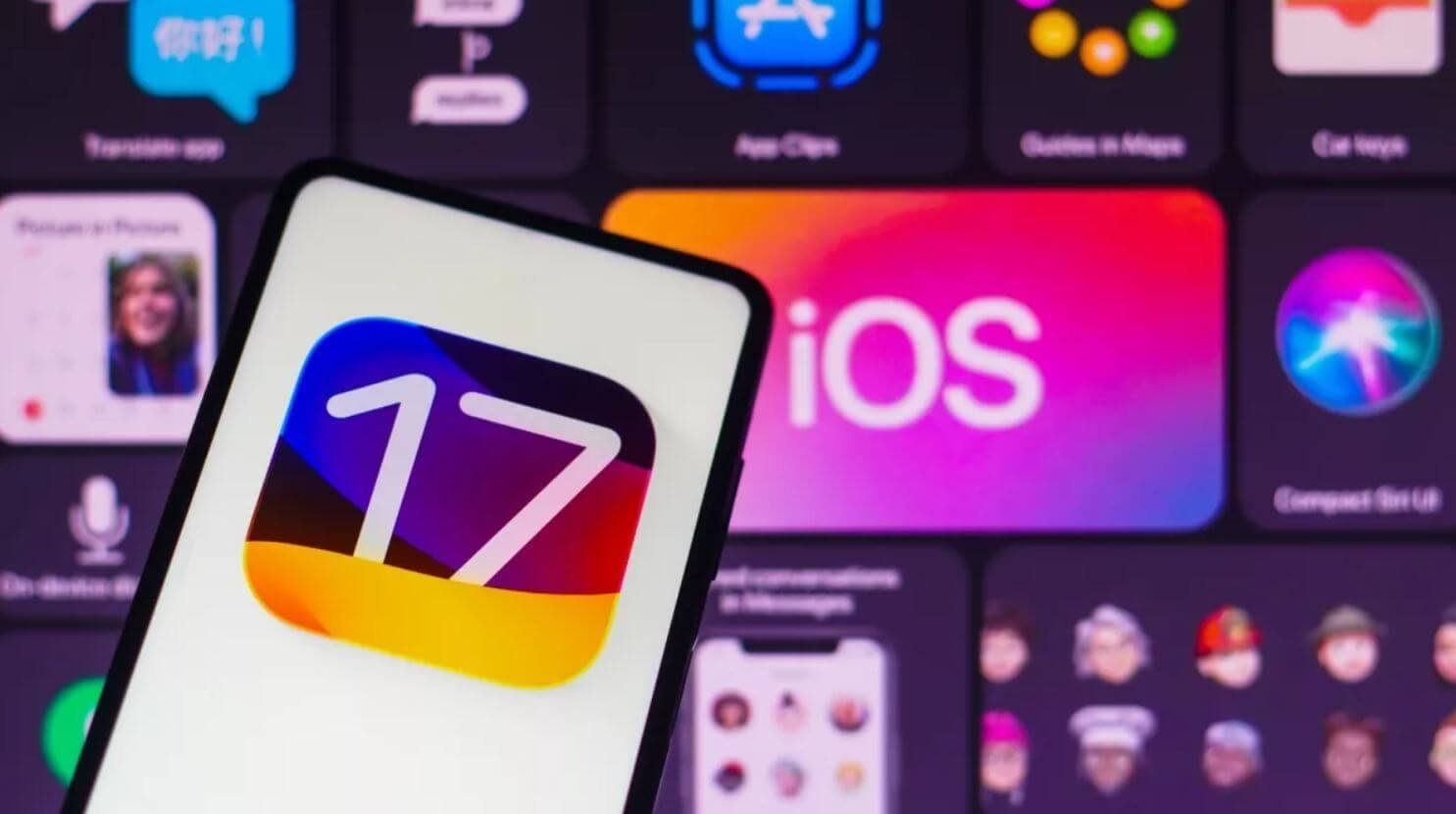
Apple is preparing for its yearly Worldwide Developers Conference (WWDC) on June 5th, where they will feature their newest advancements in software, such as updates to their operating systems for iOS, iPadOS, MacOS, WatchOS and TVOS.
Apple is planning to release iOS 17, its latest software for iPhones, this year. This is expected to coincide with the launch of the iPhone 15. At the same time, the long-awaited AR/VR headset could finally be unveiled at WWDC. According to reports, Apple executives have already tested the device.
The event will take place from June 5th to 9th and is open to developers free of charge. The first day will also feature an in-person keynote and state of the union presentation at Apple Park campus in Cupertino, California.
Apple launched several new products and updates at WWDC 2022, including iOS 16, MacOS Ventura, WatchOS 9, and a new MacBook line that uses the M2 chip.
- March 31, 2023
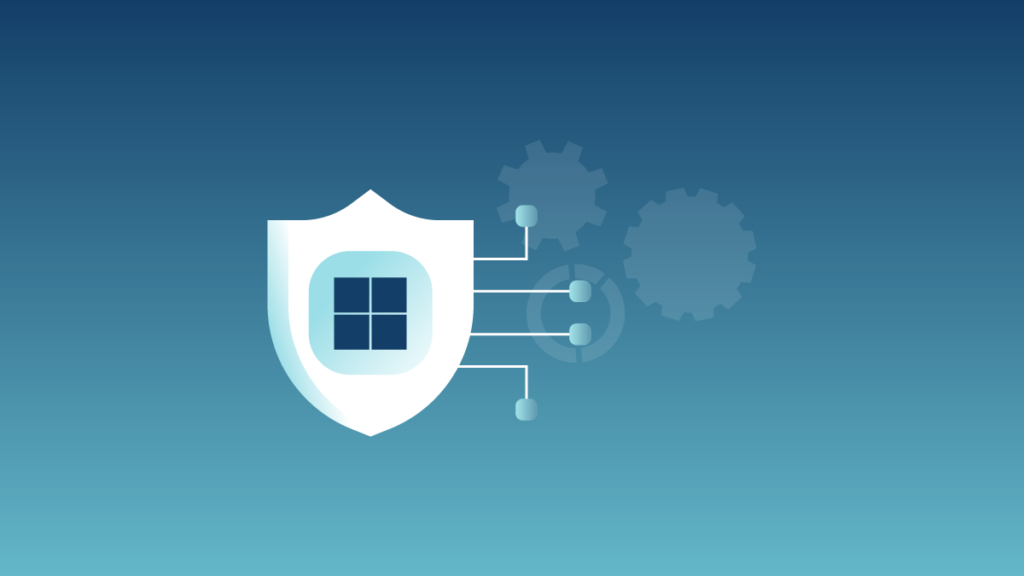
Microsoft has incorporated the OpenAI GPT-4 generative AI model into its Security Copilot protective suite. Currently in preview mode, the AI security tool is equipped to respond to inquiries regarding vulnerabilities and reverse-engineer issues.
As AI technology continues to expand in the tech industry, Microsoft’s Security Copilot provides a valuable solution for IT departments facing staff shortages and skills gaps. Appearing as a prompt bar, the chatbot is capable of coding and code analysis using natural language. It also has the capability to provide summaries of incidents, URLs, or code snippets, and generate reports that can be shared.
Compatible with various Microsoft security offerings, including Sentinel, Defender, and Intune, Security Copilot is also equipped with privacy and security features similar to Azure Hyperscale infrastructure. However, for decision-makers looking to deploy AI to their team, it is important to establish a framework that ensures human oversight before code is implemented. This is due to the fact that AI models rely on probabilistic algorithms and may not always produce accurate results.
In March 2023, OpenAI experienced a data breach resulting from a bug in an open-source library. As a result, the Future of Life Institute opened a petition, signed by more than 1,700 individuals, including Elon Musk and Steve Wozniak, that calls for AI companies like OpenAI to halt the training of AI systems more advanced than GPT-4 for at least six months. The goal is to create safety protocols to prevent potential risks associated with AI, including militarization.
Although Google has not yet revealed an AI product specifically for enterprise security, Microsoft announced in January 2023 that their cybersecurity division is now a $20 billion enterprise. Meanwhile, other security companies, such as Kubescape, ARMO, Orca Security, and Skyhawk Security, have incorporated OpenAI’s conversational tool into their products.
Overall, AI has both advantages and disadvantages in terms of security, as attackers can also use it to their advantage. It is important for companies to assess whether the technology benefits the business financially and ensures asset protection and compliance obligations are met.
- March 31, 2023
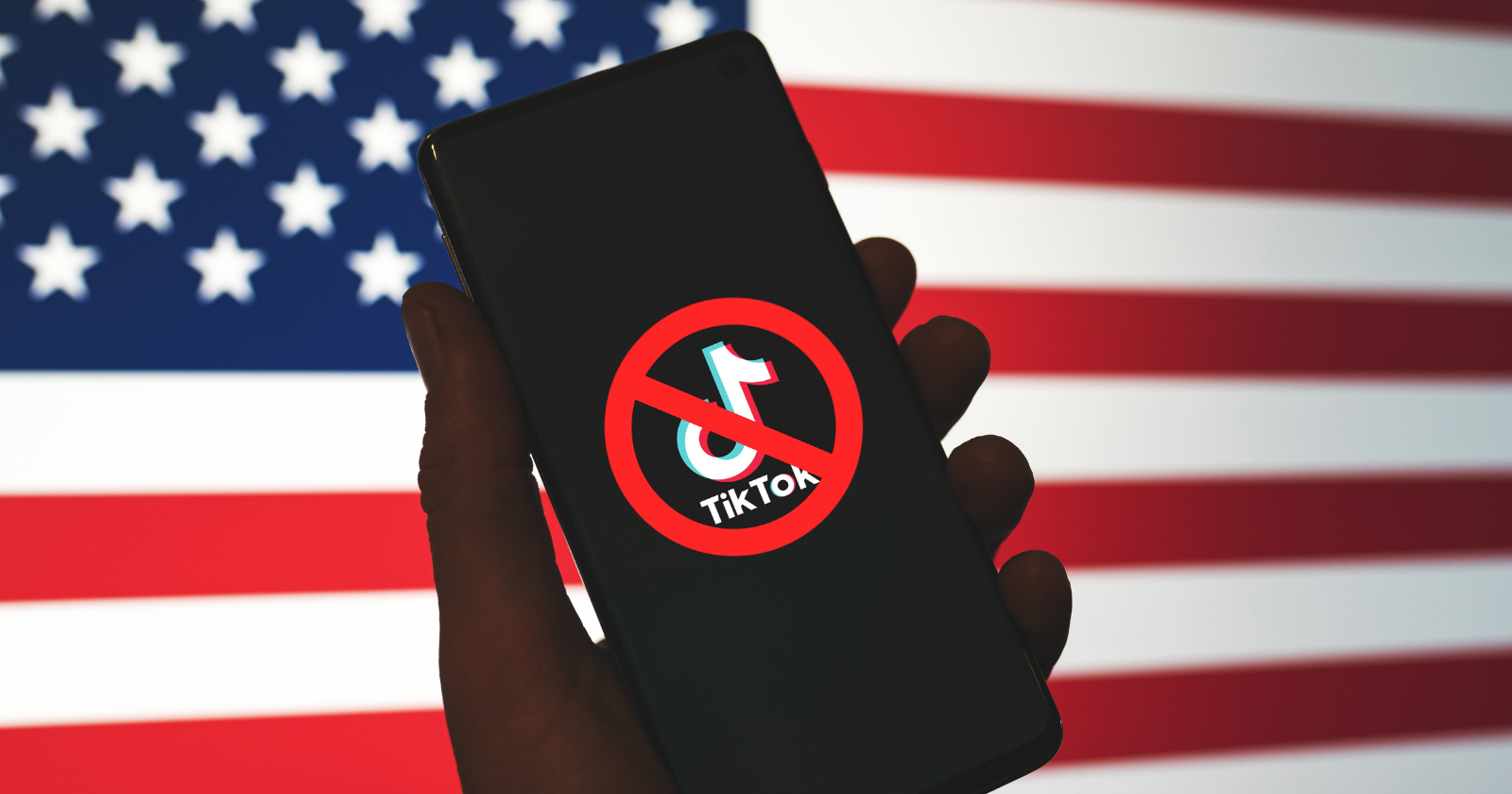
The Biden administration has issued a warning to ByteDance, a tech company headquartered in Beijing, that they must divest their ownership in TikTok or risk a ban in the United States.
The U.S. government has expressed concern over the potential for the Chinese government to access private user data or spread misinformation through TikTok, a social media app featuring short videos. In response, the administration has considered banning TikTok as part of its efforts to regulate the app.
What is the likelihood of TikTok Becoming Less Popular Over Time?
In February, the White House announced that TikTok must be removed from all government-issued devices due to national security concerns. However, exceptions are made for law enforcement activities, national security interests and activities, and security research.
If TikTok is banned in the U.S., its users may switch to other social media platforms like Facebook, Instagram, or Youtube. Advertisers are also curious about where these users may go.
The following five charts provide an overview of TikTok’s worldwide prevalence.
If TikTok were to be banned, would its users transition to other social media platforms?
According to a poll conducted by Cowen Group, there is data on potential actions of TikTok users if the app were to be shut down in the U.S.
TikTok’s Global Growth
Despite facing challenges in certain regions, TikTok’s growth potential remains high due to its strong presence in the Asia-Pacific region where 60% of the world’s social network users reside.
Insiderintelligence.com predicts that TikTok will experience the highest rate of growth among social networks in the Asia-Pacific region this year, surpassing even larger competitors like Instagram with a user increase of 13.6% compared to 7.3%.
India banned the app in June 2020 due to a geopolitical conflict with China. The ban was based on a law that allows the government to block websites and apps in order to protect the country’s “sovereignty and integrity.”
The number of people using TikTok is uncertain since it’s owned by a Chinese company. China censors internet access, making it hard to determine the app’s usage in China. Bytedance, TikTok’s parent company, released the app in 2016, and it’s called Douyin in China.
The Following Countries Are Among The Top Users of TikTok.
Before its ban in India, the country had the highest number of TikTok users. Currently, the United States has the largest audience for the app.
A statistical analysis of TikTok users in the US.
What is the average amount of time that Americans spend on TikTok?
The popularity of TikTok in the U.S. presents a challenge for potential banning, as the app has been downloaded 400 million times in the country – a higher number than any other social app since August 2018, according to Apptopia.
Data shows that American users spend approximately 60 minutes per day on TikTok, which is more than any other social network.
What are the reasons for the concerns surrounding TikTok?
According to the FBI and the Federal Communications Commission, there is concern that ByteDance may share TikTok user data with the Chinese government.
Starting in 2017, the Chinese government mandated that companies provide relevant personal data for national security purposes. Although there is no proof that TikTok has surrendered data, American officials are alarmed due to the app’s extensive data collection.
Four employees at ByteDance were terminated in December for accessing data on two journalists from Buzzfeed News and The Financial Times. The purpose of their access was to locate the source of a leaked report regarding TikTok.
According to a TikTok spokesperson named Brooke Oberwetter, the breach was a serious misuse of the employees’ authority.
Some individuals are examining the content on TikTok and its potential impact on teenagers’ mental health. According to a report from the nonprofit Center for Countering Digital Hate in December, TikTok videos related to eating disorders received 13.2 billion views.
The Pew Research Center reports that approximately 66% of American teenagers use TikTok.

